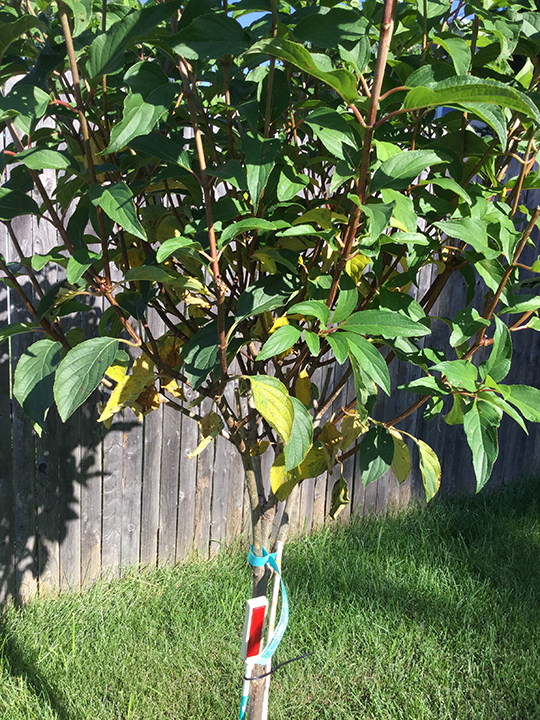What Does Hydrangea Leaves Turning Yellow Do?
Table of ContentsThe 7-Second Trick For Hydrangea Leaves Turning YellowThe 45-Second Trick For Hydrangea Leaves Turning YellowThe 3-Minute Rule for Hydrangea Leaves Turning YellowThe Of Hydrangea Leaves Turning YellowHydrangea Leaves Turning Yellow Can Be Fun For Everyone
Huge leaves commonly look droopy during the mid-day heat. When they fail to perk up in the evening or still look wilted in the early morning, your plant might be overwatered.Eliminate the plant from the soil and prune out any roots that aren't white and swollen (plump). Replant in a new location or work some sand right into the dirt for better drain. Underwatering likewise causes delegates turn yellow with brown, crispy sides. Don't attempt to remedy the trouble by sprinkling exceedingly.
Photosynthesis, as most of us understand, is vital for plant survival, so chlorosis needs to be dealt with quickly. While chlorosis can be triggered by other nutrient shortages, it is most generally an iron deficiency. In the adhering to area you will learn how to identify whether your plant has an iron deficiency or something else.
also first shows up on the older leaves, but the fallen leave blood vessels continue to be environment-friendly. A magnesium deficiency appears first on old fallen leaves and must not be perplexed with an iron deficiency [Photo: izzzy71/ Shutterstock. com] While there is normally sufficient iron in natural dirt, hydrangeas often struggle to take in enough of it.
Rumored Buzz on Hydrangea Leaves Turning Yellow
The very best method to avoid iron deficiency-chlorosis in hydrangeas is to plant them in appropriate ericaceous or acidic dirt. When growing in a bed, mix in some peat or reduced-peat ericaceous garden compost and inspect the p, H value as soon as a year. This is necessary because the compost mix around the plants will certainly influence the p, H value of the soil in the lengthy run and the p, H value might increase again.
It is only used on an industrial scale, where an extended iron shortage would certainly suggest significant yield losses. The unique fertilizers for this are often expensive and require to be applied in extremely precise doses to stay clear of damage to the fallen leaves. Foliar fertilisation is only effective for a brief duration and has to be used regularly or supplemented by regular iron fertilisation.
September is the best time of year to do something about those hydrangeas. Their leaves are transforming yellow, the blossoms have discolored, and their gangly look is making you insane.
Currently to encounter the remaining hedge, not a rather sight as wintertime techniques. Mophead, Lacecap and Oakleaf hydrangeas bloom on old timber. What that indicates is they will flower following year on timber that was developed this year. Do not prune Mophead, Lacecaps and Oakleaf hydrangeas to the ground, as you will get rid of the stems that are prepared to grow next springtime.
Our Hydrangea Leaves Turning Yellow Diaries
That way you will not be removing way too many of next year's blossom buds. Prune out as much dead timber as you can discover. You can reduce nonessential to the ground. If the hedge is obtaining larger than you like, you can secure a 3rd of the official site live timber while you remain in there.
We're best in the center of our late-blooming hydrangea season here, so I believed I would certainly share a suggestion for this particular kind of hydrangea that I discovered really fascinating. A great deal of people have a comparable concern with their panicle hydrangeas where they begin to see the fallen leaves turning yellow and handing over at various parts of the season and it can be pretty remarkable and quite worrying since it can take place actually rapidly on a hedge that feels like it's otherwise truly healthy.

Where we reside in zone 6, they're fairly easy to have success with and they're truly preferred in our location, which is fantastic because that indicates that there are hydrangeas just regarding everywhere currently of year. When you see your hydrangea leaves beginning to turn yellow, you might believe that your plant is passing away or being abused somehow, but in fact, the opposite holds true.
A Biased View of Hydrangea Leaves Turning Yellow
If you truly wish to make the most of flowers, a (the center number) will really assist increase the number and dimension of your blossoms. You should see the number of newly-yellowed leaves lower pretty promptly you can find out more as soon as you offer your hydrangea the food it requires. Hydrangea Leaves Turning Yellow. Fortunately is that if you do definitely nothing, the plant will certainly still be great, it will simply have a few less fallen leaves
Courtenay is the author of guide The Cleansing Ninja and has actually been featured in various publications consisting of Nation Sampler Farmhouse Design, Better Homes and Gardens, Parents Magazine, Real Simple, and Our Homes.
Water logged soil deprives the roots of oxygen, resulting in root rot and yellow fallen leaves. On the other hand, underwatering or dehydration triggers the plant to wilt and its vegetation to yellow. Preserving a consistent watering routine and making certain appropriate water drainage via drain holes or layers can help avoid these concerns.
Regularly inspect the click this site dirt level of acidity, and adjust as required to keep the optimum p, H degree for hydrangeas. With correct treatment and upkeep, hydrangeas can thrive and retain their brilliant, colorful fallen leaves. Hydrangea leaves turning yellow is a common problem that can be connected to various factors. One of the key reasons is inappropriate watering, as hydrangeas need regularly damp soil to prosper.
The Ultimate Guide To Hydrangea Leaves Turning Yellow
